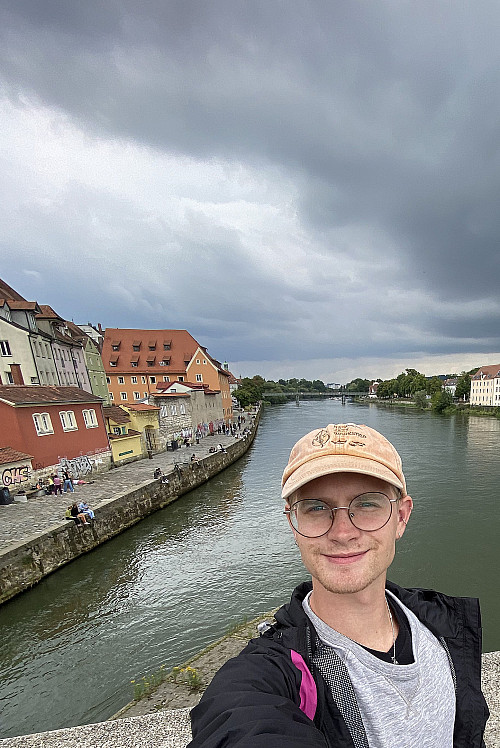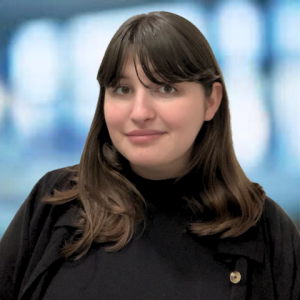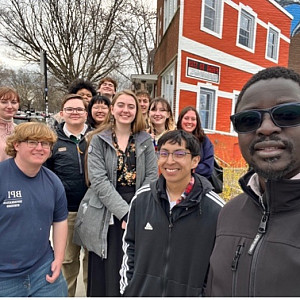International internship in anthropology
George Carlson spent the summer examining human health in the past during an international research trip with Prof. Leslie Williams

Credit: George Carlson’23The Coronavirus pandemic canceled opportunities to attend field schools, internships, and summer research while I was an undergraduate at Beloit College, so I felt incredibly thankful to participate in Bioarcheological Research in Munich, Germany the summer after I graduated as a Teacher’s Assistant. I was nervous to go since I hadn’t been in an intensive research setting before. But I knew this was the perfect opportunity to gain skills that that I missed out on due to the pandemic, those of which I will apply for future endeavors, like internships, graduate school, and jobs.
Under the guidance of Dr. Leslie Williams, three students and I analyzed human skeletal remains from an urban necropolis in Regensburg to aid in the objective of understanding how the collapse of empires affects the human body and, therefore, society at large. Castro Regina was a Roman site located in the contemporary Regensburg, Germany. It is an incredibly interesting site as it was located on the outskirts of the Roman Empire and active before, during, and after the collapse of the Empire itself. Over 1,000 individuals were excavated from the Castro Regina cemetery to build new apartment complexes for the contemporary city.
Using Dr. Williams’ research collection database, we took inventory of the bones, estimated the sex and age of each individual, and looked for evidence of pathology, such as degenerative joint disease, linear enamel hypoplasia, and periostitis. This data, in correspondence with recorded archaeological material, allows us to create a profile for the individual and get an idea of who they were and their health status. We can then look for patterns and anomalies to get an idea of what the society looked like as a whole.
Our lab was stationed in Munich, but we were able to visit Regensburg one weekend. We walked around the city with one of the lead archaeologists investigating Castro Regina. She showed us the Roman walls and gave us a private tour of the Regensburg Museum of History. It was incredible to see the ancient city walls and see the archaeological material associated with the individuals we study in the lab. We learned just how similar they were to us and made the bones in the lab feel even more human.
Through this research, I’ve learned data osteological data collection methods and gained experience collaborating with fellow students and professionals. As a TA, I operated in many roles to help both Dr. Williams and students succeed in the lab. This has been a wonderful opportunity that reminded me why I love biological anthropology.


